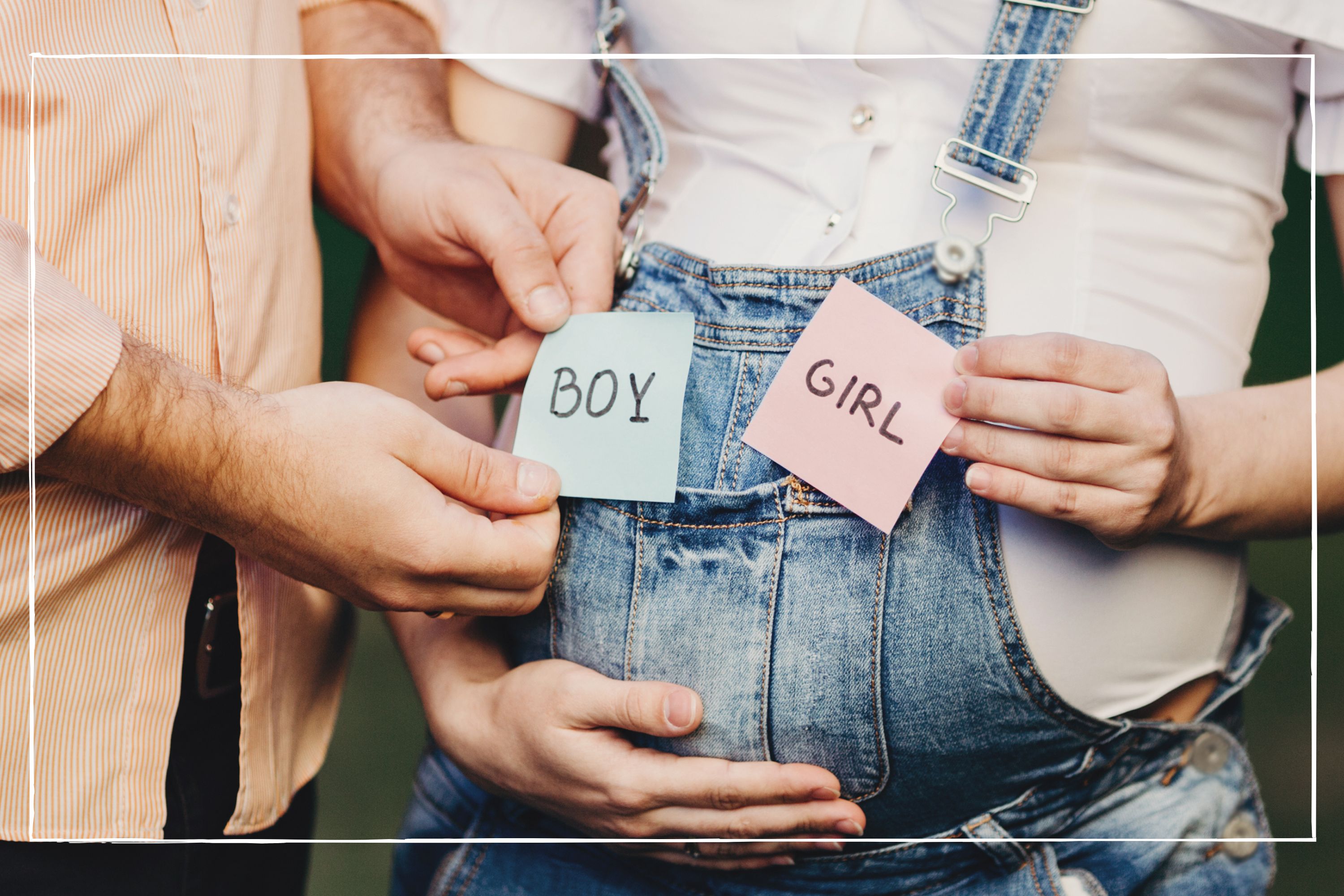Baby gender predictor tests to try at home
Baby gender predictor tests can be fun to try yourself at home

Baby gender predictor tests are a fun way to try and guess if you are having a boy or a girl before your 20-week scan.
While the pregnancy scan that is carried out when you're between 18 and 21 weeks pregnant is your first official chance to find out the sex of your baby, there are actually quite a few ways to predict the gender of your baby before you find out from the sonographer.
Ranging from the Chinese birth chart - an ancient method of baby gender prediction that dates back to the 13th century - to more modern baby gender predictors tests - such as nub theory, skull theory, and Ramzi theory these methods are meant to be fun rather than factual.
After all, guessing the gender of your baby and considering old wives' tales about pregnancy are an enjoyable and exciting part of expecting – even if you decide to keep the sex a secret until the birth!
Baby gender predictor tests to try at home
Some of these baby gender predictor tests are based on scans but others are based on old superstitions. If you have a hunch about the sex of your child, try a few of these different baby gender prediction methods and see if the answers match up!
Nub Theory
One of the most popular (and some may argue most accurate) methods of baby gender prediction in the early stages of pregnancy is the Nub Theory test.
You can try the Nub Theory for yourself once you have your 12-week ultrasound picture. The theory is based on the fact that between the stages of 11-13 weeks, all babies have a ‘nub’ between their legs. This is called the genital tubercle. According to this baby gender predictor test, the angle of the nub indicates whether you are having a boy or a girl.
GoodtoKnow Newsletter
Parenting advice, hot topics, best buys and family finance tips delivered straight to your inbox.
Find out how to try the Nub Theory at home here.

Chinese birth chart baby gender predictor
While the exact date that this baby gender prediction method was first used is not known, it is thought that the ancient art of predicting a baby's gender using a Chinese birth chart dates back to at least the 13th century.
According to Chinese Astrology, the Chinese birth predictor chart was first used during the Qing Dynasty between 1644 - 1911 AD. 'It is based on two elements: the mother-to-be's lunar conception month and Chinese lunar age when the baby is conceived.' The Chinese birth chart is actually much simpler to use than it sounds. You just have to know how old you were when you conceived and what month your baby was conceived in.
See the Chinese birth chart and work out if you will have a boy or girl
Predict your baby's gender using over 30 different old wives tales
For fun baby gender predictor tests that are less to do with facts and more to do with feelings, look no further than our list of popular pregnancy superstitions that many believe will reveal if you are going to have a boy or girl.
Ranging from well-known indicators such as how high your bump sits to less popular suspicions such as how you hold a cup of tea (yes, really) we've picked out 36 of the best old wives' tales about pregnancy here. It's up to you to decide how accurate they are, but at least you and your friends and family might have a good laugh in the process! Plus, they make quite fun baby shower games too, if everyone is making a guess about the baby's gender before the birth.
Ramzi Theory
Also known as Ramzi’s method, this baby gender predictor claims to be able to determine if your baby is a boy or girl by as early as six weeks. For this method of baby gender prediction you use a 2D ultrasound picture to see which side the placenta is on. Depending on whether the placenta is on the left or the right will suggest what sex your baby is.
Learn more and see how to try the Ramzi Theory
Skull Theory
Similar to the Ramzi theory, the Skull Theory for baby gender prediction requires a closer look at one of your scan photos to try and determine if you are having a boy or girl.
For this baby gender predictor test you will need your 12-week scan photo. The idea behind the theory is that there are cranial differences between men and women. It is though that you can start to see these in the womb, as early as 3 months into a pregnancy.
Netmums report that 92% of mums found the Skull Theory accurate at predicting the sex of their baby. See how to try it for yourself and learn more about the Skull Theory here.
Using your linea nigra as a baby gender predictor
Linea nigra is Latin for 'black line' and is a line that may appear on your stomach during pregnancy. It is very common for women to develop this vertical line when they're expecting and, as the NHS advises, it's nothing to worry about: 'This is normal skin pigmentation and nothing to worry about. It will probably vanish a few months after your baby's born.'
Some people think that if you develop a linea nigra, it can help you predict your baby's gender. Apparently, if it extends from your navel downwards towards your pubic bone then you’re more likely to have a girl. However, if your linea nigra is heading ‘north’ – from your navel up towards your head – then you are more likely to have a boy.
Take our boy or girl quiz
If you're looking for a fun baby gender predictor test that doesn't involve analysing ultrasound scans or knowing exactly when you conceived, then take our Am I Having A Boy or Girl Quiz.
It's a simple and lighthearted quiz where your answers will help determine if you might be more likely to have a boy or a girl. Even if you're keeping your baby's gender a secret until the birth, it might be fun to aid your guesses and you never know, it might help with choosing baby names!
You might also like:
Gender selection: how to conceive a boy or a girl
Due date to predict baby's birthday
How your baby's birth month affects their life
Video of the Week:
Stephanie has been a journalist since 2008, she is a true dynamo in the world of women's lifestyle and family content. From child development and psychology to delicious recipes, interior inspiration, and fun-packed kids' activities, she covers it all with flair. Whether it's the emotional journey of matrescence, the mental juggling act of being the default parent, or breaking the cycle of parenting patterns, Stephanie knows it inside out backed by her studies in child psychology. Stephanie lives in Kent with her husband and son, Ted. Just keeping on top of school emails/fundraisers/non-uniform days/packed lunches is her second full-time job.